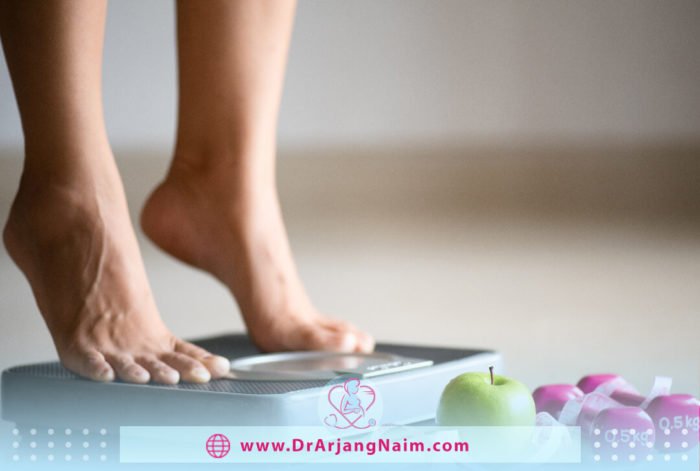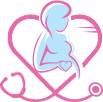An overactive bladder also called an OAB, is a frequent, sudden urge to urinate that is difficult to control. In this case, the person needs to urinate several times during the day and night, and it may also cause unintentional loss of urine.
The bladder is an organ that collects urine from the kidneys and excretes it when it is full. If the bladder is overactive, the person cannot control the time of urination and the number of times a day.
Symptoms of OAB can be managed with simple behavioral strategies, such as dietary changes, timely urination, and bladder restraint techniques using the pelvic floor muscles. If these initial efforts do not help the symptoms of an overactive bladder enough, additional treatments are available.
Symptoms
The experience of occasional incontinence does not mean that a person has an overactive bladder. Leakage of urine can also occur for other reasons, such as laughing too hard.
Symptoms of OAB include:
- Feeling of a sudden urge to urinate that isn’t easy to control
- Unwanted loss of urine immediately after the urgent need to urinate
- Frequent urination, usually eight or more times in 24 hours
- Waking up more than twice a night to urinate
Causes
An overactive bladder can occur for various reasons or even a combination of reasons.
Weak pelvic muscles
Pregnancy and childbirth can stretch and weaken the pelvic floor muscles and the tissues that support the lower abdomen. This can cause the bladder to deviate from its normal position. All of these factors can cause a leak.
Nerve damage
Sometimes signals are sent to the brain and bladder to be evacuated at the wrong time. Trauma and illness can cause this to happen. These include:
- Pelvic or back surgery
- Herniated disc
- Radiation
- Parkinson’s disease
- Multiple sclerosis
- Stroke
Medications, alcohol, and caffeine
Medications, alcohol, and caffeine can dull the nerves, affecting the brain’s signal. This can lead to bladder overflow. Diuretics and caffeine can cause the bladder to fill quickly and possibly leak.
Infection
Infections, such as urinary tract infections, can irritate the bladder nerves and cause the bladder to squeeze without warning.
Excess weight
Being overweight puts more pressure on the bladder. This can lead to immediate incontinence.
Estrogen deficiency after menopause
Hormonal changes can help with urinary incontinence. In these cases, estrogen therapy can help.
Risk factors
As people get older, they become more at risk for overactive bladder and diseases and disorders such as prostate enlargement and diabetes that can contribute to other bladder problems. Many people with cognitive decline have an overactive bladder. Incontinence in these people can be managed with bowel programs, fluid schedules prompted voiding and absorbent garments.
Complications
Any incontinence can affect the overall quality of life. If the symptoms of an overactive bladder interfere with life, there may be other consequences:
- Emotional distress or depression
- Anxiety
- Sleep disturbances and interrupted sleep cycles
- Issues with sexuality
In some cases, treating these conditions can help reduce these symptoms. Women with an overactive bladder may develop mixed incontinence when urgency and stress incontinence occur together. Stress incontinence is the unintentional loss of urine from physical movements or activities that pressure the bladder, such as coughing, sneezing, laughing, or exercising. Treating stress incontinence is unlikely to help with the symptoms of an overactive bladder. Similarly, treatment for an overactive bladder may not improve the symptoms of stress incontinence.
Overactive bladder in men
OAB is more common in women. Many men may not report symptoms of OAB to their doctor. Many cases of OAB in men are the result of an enlarged prostate. As the gland swells, it can block urine flow and exacerbate urinary incontinence. Prostate enlargement is more common in older men, so an overactive bladder is also more common. Treatment of prostate problems may reduce the symptoms of OAB.
Overactive bladder in women
Women are more likely to develop OAB symptoms. It is not known what causes an overactive bladder, but OAB is more common in postmenopausal women, which may be the result of estrogen deficiency in women can be treated with medication, surgery, and some physical exercises.
Overactive bladder in children
OAB is common in children. They often develop symptoms of an overactive bladder, but treatment can help prevent recurrent urination and complications.
Symptoms of OAB become less common as children get older. As children get older, they learn to control their bladder properly and recognize the signals they need to urinate. Causes of Overactive bladder in children include:
- Urinary tract infection
- Allergy
- Caffeine
- Anxiety and stress
- Structural abnormalities
- Constipation
Like adults, overactive bladder treatments in children focus on treating any underlying cause and preventing symptoms.
Behavioral changes to help overactive bladder
There are many techniques and changes in common behaviors that can be done to help the overactive bladder.
Keeping a log
During a typical day, write down the number of fluids consumed, the number of urinates, the number of accidents, and when they occur.
Monitoring diet
Eliminate foods or beverages that may make bladder symptoms worse. These can include the following:
- Tea
- Coffee
- Alcohol
- Spicy and acidic foods and drinks
- Foods and drinks that contain an artificial sweetener
- Chocolate
- Caffeinated soft drinks
- Citrus juices and fruits
- Tomatoes and tomato-based products
Maintaining bowel regularity
Constipation can put more strain on the bladder and negatively affect bladder function. Constipation can be prevented by following healthy habits. Some of these habits include:
- Increase fiber intake by eating foods such as fresh fruits and vegetables, whole grains, beans, pasta, oatmeal, and whole wheat bread
- Regular physical activity to maintain bowel movements
Maintaining a healthy weight

Being overweight can put pressure on the bladder. People who are overweight can lose weight to help reduce their symptoms.
Stop smoking
Smoking stimulates the bladder muscle. Frequent coughing from smoking can cause urine to leak.
Drinking plenty of non-irritating fluids
People who have frequent urination often drink less fluids, so they do not need to urinate. Drinking fewer fluids produce more concentrated urine. Highly concentrated urine irritates the bladder and causes frequent urination. For this reason, people with inactive bladder should not drink less water. It is best to limit drinking to two or three hours before going to bed, and drinks that may worsen bladder symptoms should also be reduced or eliminated.
Beginning bladder retraining
When a person has an overactive bladder, the bladder muscles become conditioned to respond in a certain way over time. By retraining these muscles, they may be able to tolerate urine more. Bladder retraining involves:
- Learning how to resist or control the feeling of urgency.
- Delaying urination.
- Urinating according to a timetable.
Controlling the urge
The key to bladder retraining is to develop the ability to control the urge to urinate. There are several tips and strategies that can be followed. A complete bladder retraining program usually takes six to eight weeks to get results. When a person experiences a sudden urge, the following strategies may help:
- Stop activity and sit down.
- Squeeze pelvic floor muscles quickly several times
- Relax the rest of body and take a deep breath
- Wait until the urge subsides.
- Walk to the bathroom at a normal pace.
Diagnosis

The doctor will perform several tests to diagnose the cause of overactive bladder symptoms. The doctor may also refer the patient to a specialist who treats urinary tract problems. These doctors are called urologists.
Urine sample
A urine sample is collected and then tested for abnormalities, including blood. A urine test can help identify a urinary tract infection or other urinary tract problem.
Physical examination
The doctor examines the area around the abdomen and kidneys and the size of the prostate in men.
Bladder scan
This test uses ultrasound to measure the amount of urine left in the bladder after urination.
Urodynamic testing
A set of tests can assess the bladder’s ability to hold and store urine.
Cystoscopy
During this test, the doctor inserts a bright scope into the bladder. Cystoscopy helps the doctor determine if there are any symptoms of a bladder abnormality, such as a bladder stone or tumor. A biopsy can also be taken.
Treatment
There are several treatments available to help manage Overactive Bladder symptoms.
Pelvic floor physical therapy

Physiotherapists can help manage various urinary problems through exercise and strengthening targeted muscles, including urgency, recurrence, and nocturnal symptoms.
Medication
Medications that treat an overactive bladder focus on two effects, relieving symptoms and reducing periods of urgency and incontinence. OAB medications may cause side effects such as dry eyes, dry mouth, and constipation.
Botox
Small doses of Botox can temporarily paralyze or weaken bladder muscles. This prevents them from contracting too much, which can reduce the symptoms of an overactive bladder. The effects of the injection usually last for six to eight months, so repeated treatments may be needed.
Overactive bladder surgery
Surgery is recommended when other treatment options have failed to reduce symptoms.
Sacral nerve stimulation
Sacral nerve stimulation is a surgical option and involves a small implant device used as a pacemaker for the bladder. A small device is implanted under the buttocks’ skin to treat sacral nerve stimulation.
Weak electrical signaling device through a circuit located near the nerve in the lower back (sacral nerve); It affects the bladder, sphincter, and pelvic floor muscles. This electrical stimulation facilitates communication between the brain and the bladder to eliminate or reduce some of the bladder control functions.
Urinary diversion
Redirection of the ureters can reduce the frequency and need for urination. During this procedure, the doctor bypasses the bladder and makes a hole in the abdominal wall where urine can drain into the ostomy sac.
Cystoplasty
If the doctor determines that OAB symptoms result from a very small bladder, they may suggest enlarging it. However, cystoplasty is usually prescribed for people who have not seen any improvement in other treatment options.
Bladder removal
The doctor rarely decides that complete bladder resection is the only option to eliminate the symptoms and complications of OAB.
The bottom line
OAB is a sudden, intense urge to empty the bladder associated with urinary incontinence. Frequent urination and nocturnal urination are other symptoms of the disease.
Symptoms can be difficult to manage because an overactive bladder can be unpredictable. This can cause some people with the disease to limit their social activities, affecting their quality of life. But doctor-prescribed treatments and lifestyle changes can help improve symptoms.
Dr. Arjang Naim MD thoroughly examines the patient’s condition, diagnoses the cause of incontinence, offers the necessary treatment strategy, and refers to a urologist if necessary.
Additional questions
1. How much urine output is normal?
The normal range of urine output is 800 to 2000 ml per day if a person consumes about two liters per day.
2. What foods are good for an overactive bladder?
Choose foods rich in vitamins such as non-acidic fruits and vegetables. Fruits for bladder health include:
- Watermelon
- Strawberries
- Blackberries
- Bananas
- Apples
- Grapes
- Coconut
Vegetables for bladder health include:
- Carrots
- Celery
- Lettuce
- Peppers
- Asparagus
- Broccoli
- Cucumbers
- Kale
3. What exercises are good for bladder control?
Kegel exercises strengthen the pelvic floor muscles, which support the uterus, bladder, small intestine, and rectum.
4. What is the maximum amount of urine the bladder can hold?
A healthy human bladder can hold between 400 and 500 milliliters of urine, or about 2 cups, before reaching capacity.
5. Can anxiety cause OAB?
Anxiety and OAB can occur simultaneously. Stress and anxiety affect the bladder in different ways. Both cause the muscles of the body to contract.
References:
https://www.mayoclinic.org/diseases-conditions/overactive-bladder/diagnosis-treatment/drc-20355721
https://my.clevelandclinic.org/health/diseases/14248–overactive-bladder-
https://www.webmd.com/urinary-incontinence-oab/ss/slideshow-overactive-bladder
https://www.healthline.com/health/overactive-bladder
https://www.healthline.com/health/overactive-bladder/home-remedies
https://www.healthline.com/health/overactive-bladder/overactive-bladder-diet




